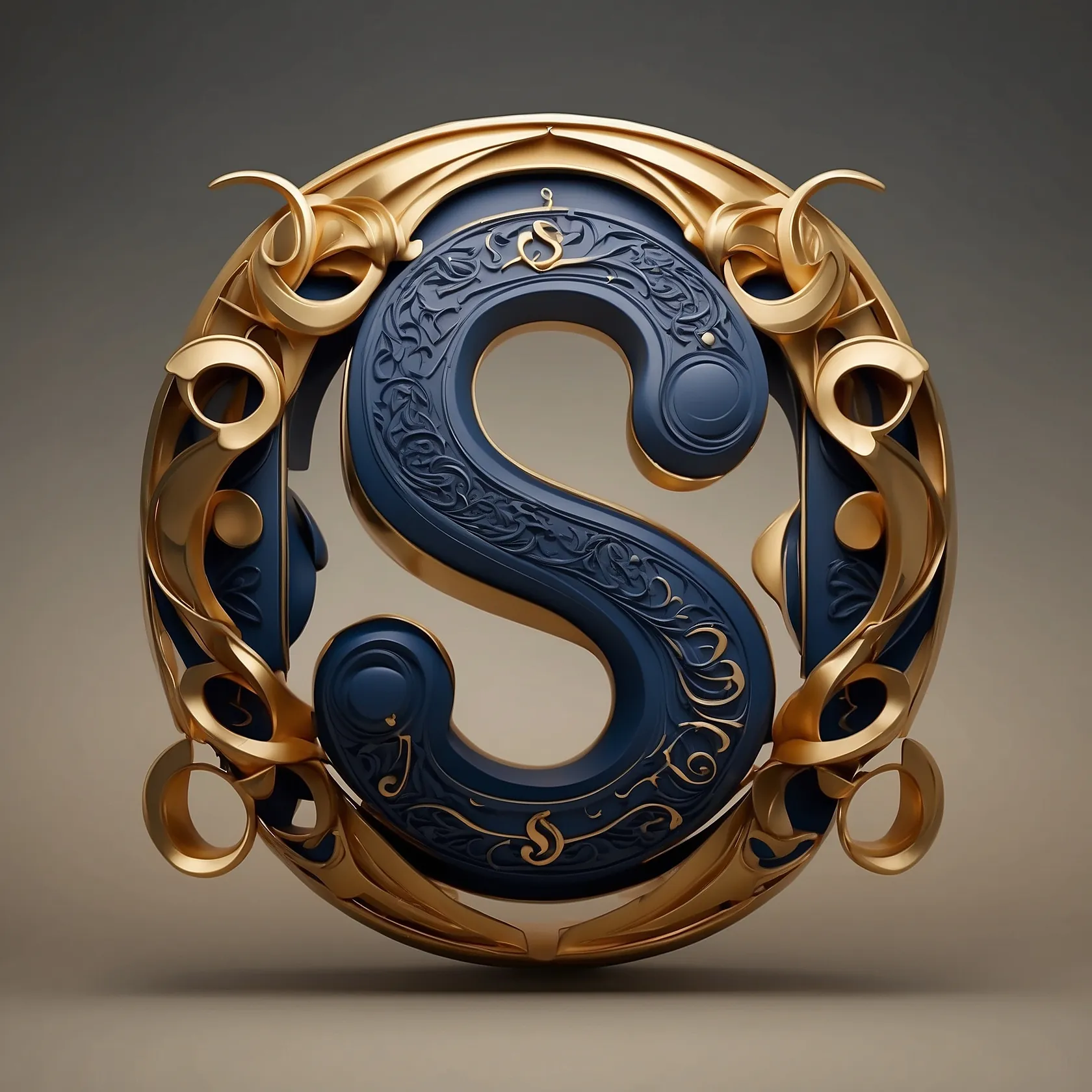Ancient Origins: From Sharp Teeth to Serpentine Curves
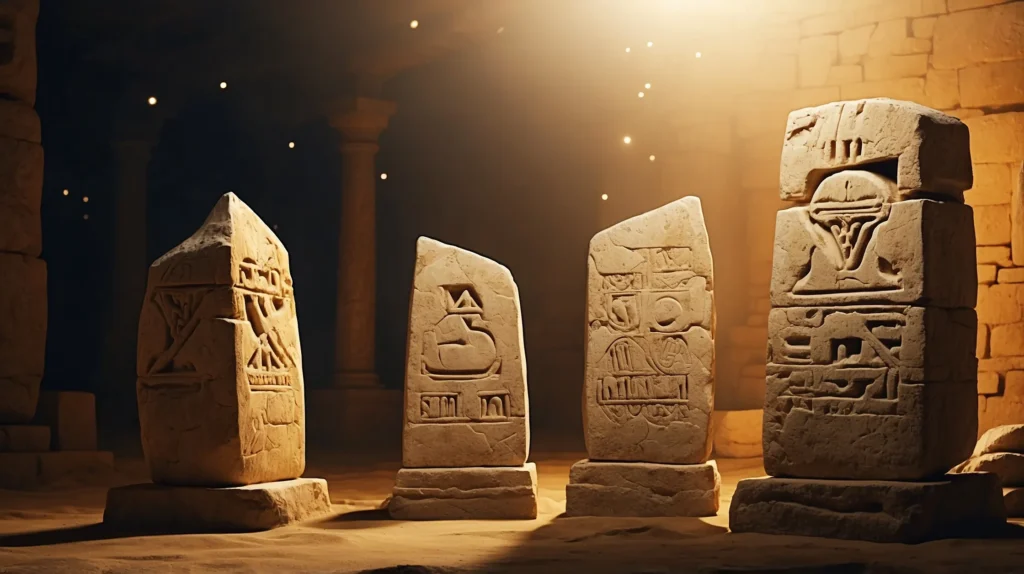
(AI Generated)
Our modern letter S has been on one heck of a journey. If you trace it all the way back, you’d find yourself looking at something called “šīn” in Proto-Semitic – supposedly representing a tooth! No joke. Check out those ancient carvings and you won’t see anything like our curvy S – just something angular and jagged.
The Phoenicians picked up this symbol and ran with it, transforming it along the way. Their version was still kinda angular, but you can see it starting to flow more. Then the Greeks got their hands on it, turned it into their Sigma (Σ), and boom – another big change.
By the time the Romans were doing their thing, the letter had morphed into something pretty close to our modern S. They kept the essential curvy vibe but cleaned it up, standardized the proportions, and made it look all official. Classic Romans always made things look fancy.
S has totally transformed over centuries – you can blame different writing tools, changing tastes in style, and whatever people needed at the time. Pretty wild journey from those ancient tooth carvings to the smooth curves we use today! And yet, through all that change, it’s somehow stayed true to itself. That’s more than I can say about most letters.
The Sound of S: Whisper, Hiss, or Shout?
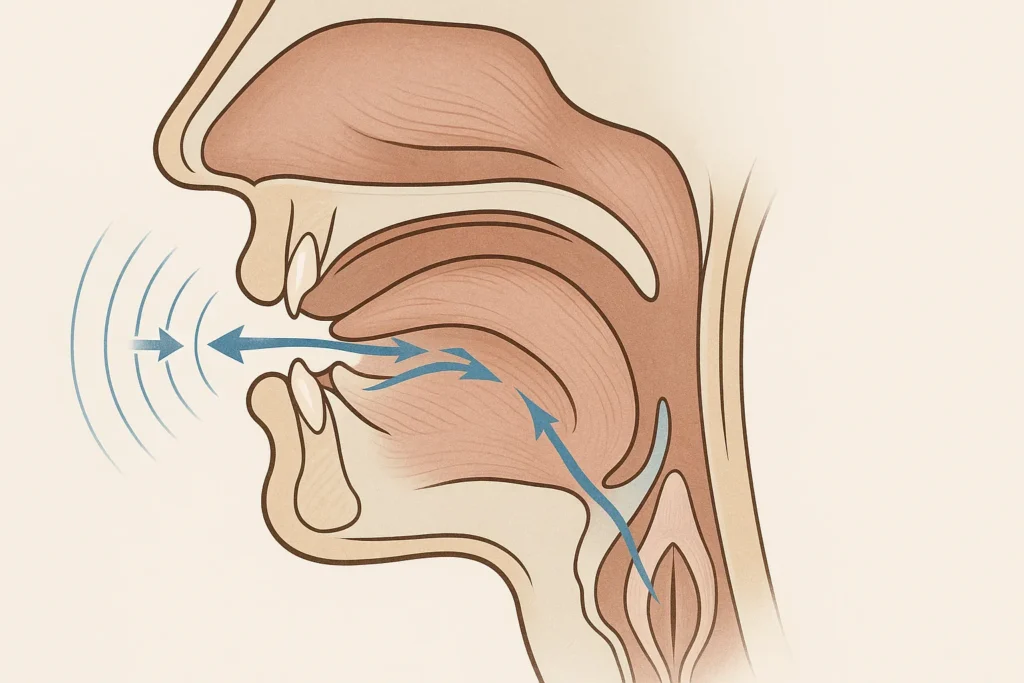
(AI Generated)
So what about that distinctive S sound? The language nerds call it a “voiceless alveolar fricative” (don’t ask me to explain that at a party). But whatever you call it, that sound does something to us emotionally. Think about it – when we want someone to be quiet, we go “Shhh!” When we imitate a snake’s warning, there it is again. Not a random choice, if you ask me. The sound naturally evokes alertness and attention.
Different languages shape the letter S sound in subtly different ways. English speakers produce a relatively neutral “S”, while Spanish introduces variations such as the softer sound in “casi.” German often sharpens it, and Slavic languages might soften it further depending on the surrounding sounds.
Did you know our brains process the letter S sounds differently from other consonants? I read this study once (during a 3 AM Wikipedia rabbit hole, don’t judge) that showed we’re hardwired to notice and respond to those hissing S-like sounds. They’re called “sibilants” if you wanna sound smart at parties. Makes sense from an evolutionary standpoint – hearing that hiss could mean “Snake nearby, don’t die!”
It’s wild how speech loaded with the letter S sounds affects us. Sometimes it’s super soothing, like waves on a beach – “Soft summer sunshine streaming…” – but other times it puts us immediately on edge – “Sinister shadows surrounded the suspicious stranger.” Same sound, totally different reactions! No other sound in language can mess with our heads quite like S does.
Symbolism of S: Serpents, Secrets, and Sacred Power

(AI Generated)
Let’s face it – when most of us see the letter S, we think of snakes. It’s probably the most obvious connection, right? I mean, just look at them both! And it’s not just about the shape – across pretty much every culture, snakes symbolize all these deep concepts like wisdom, temptation, rebirth, and healing. The resemblance between a slithering snake and our curvy letter S jumps right out at you, but I think there’s something even deeper going on there.
You know what’s fascinating? If you dig into those old occult traditions and alchemy stuff (yeah, I went through a weird phase in college), the letter S pops up in all these mysterious contexts. Those guys were obsessed with hidden meanings. Alchemists used it in formulas and codes, connecting the letter to transformation and hidden knowledge. Its flowing form suggested fluidity between states of matter and being.
Religious and spiritual traditions have similarly embraced the letter S symbolism. From the Staff of Asclepius in medicine to the serpent in Eden, S-shapes carry sacred significance. The word “sacred” itself begins with this powerful letter, as do “spirit,” “soul,” and “sanctity.”
Perhaps most telling is the connection between S and secretive things. We “speak in hushed tones,” “whisper secrets,” and keep things “silent.” The sound itself seems designed for discretion, and many words related to hidden knowledge start with this sibilant symbol.
The Typographic Challenge: Designing the Perfect S

(AI Generated)
My friend Jen designs fonts for a living, and she’s always complaining about the letter S. “That damn letter S is going to be the death of me,” she texts me at 2 AM sometimes. It’s the Mount Everest of letters for designers. Getting those curves just right is like some kind of dark art – the upper and lower parts have to balance perfectly while still looking natural. Too much weight at either end and the whole thing falls apart visually.
The last time we had coffee, she showed me about fifteen different versions of the same S she was working on. They all looked identical to me, but she was obsessed with tiny adjustments I couldn’t even see. “This one’s upper curve is too tight,” she’d say, or “The transition here is awkward.” Font people are another breed, I swear.
And don’t even get me started on digital stuff. Computers and their stupid pixel grids just can’t handle curves naturally. Making a tiny letter S look good on screen is like trying to draw a perfect circle with Lego blocks. My designer friends tell me they spend like 80% of their time just tweaking that one letter when creating digital fonts. Seems excessive, but I kinda get it now.
I tried calligraphy once – a big mistake. Turns out there are different schools of thought on how to create an S with a pen. Some calligraphers start from the top, others from the middle (which blew my mind), but they all obsess over getting that flow just right. If you want to spot a master calligrapher, just look at their S. If they can nail that, they’ve pretty much conquered the craft. My letter S looked like a drunk snake, so I had work to do.
It’s all about balance with the S – like a perfectly balanced seesaw between the top and bottom curves. Make the top too heavy, and the whole thing looks like it’s about to topple over. Bottom too chunky? Same problem. Our eyes get super annoyed when traveling through an unbalanced letter S – it’s like hitting a speed bump while reading. This balancing act is why typography professors use S as their ultimate “show me what you got” test. It separates the design dabblers from the true artists. Nobody ever fully masters it; they just keep chasing that perfect letter S their entire careers.
“S” Across Global Writing Systems
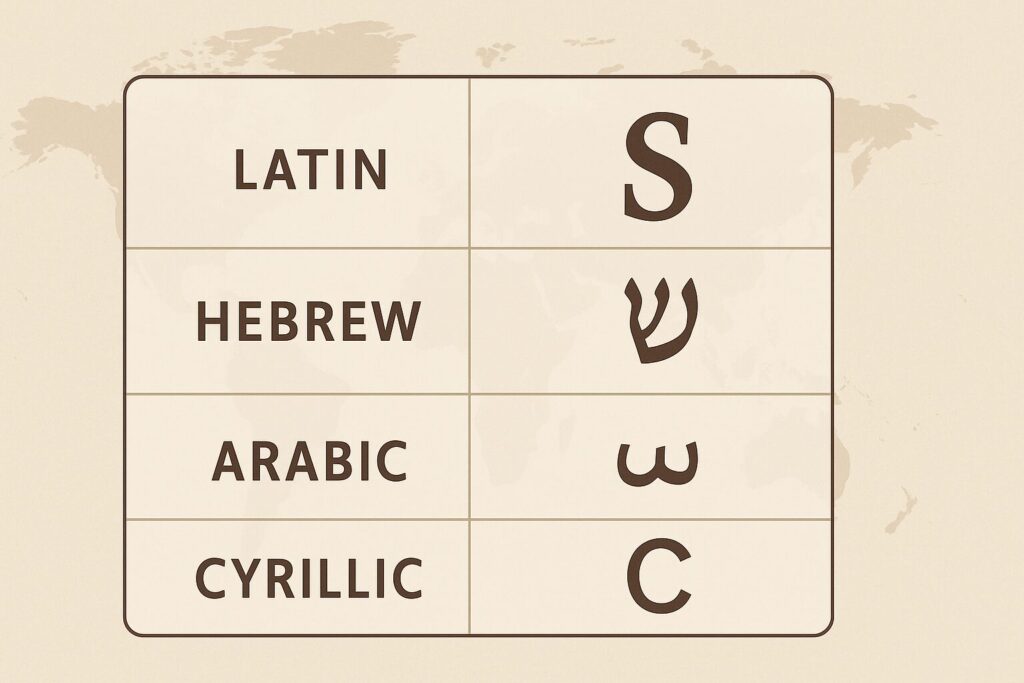
(AI Generated)
So I was scrolling through Instagram when I should’ve been working (as one does), and I saw this post comparing the Latin S with the Cyrillic С (they call it “es”). Honestly, they could be twins separated at birth! Despite developing in completely different parts of the world, they both have that same curvy vibe. There are some tiny differences in how the curves end, but you’d have to be a real alphabet nerd to spot them right away.
The Semitic scripts are where things get wild. Hebrew has this cool letter שׁ (shin) and Arabic has س (seen) – both cousins to our S. They’ve gone their ways over the centuries, fashion-wise, but they’re still part of the same extended family. The Hebrew one is my favorite – it still kinda looks like teeth if you squint and use your imagination. Makes sense, given the whole “tooth” origin story. My Jewish friend laughed when I pointed this out – apparently, I wasn’t the first to make that connection!
Check this out – even in unrelated Eastern writing systems, the characters that make S-like sounds often have curvy, flowing shapes. Complete coincidence? I doubt it. My friend who studies Japanese pointed this out over beers once, and I couldn’t stop thinking about it. It’s like humans all over the planet somehow agreed: “This hissy sound? Yeah, let’s make it look swooshy and curvy.” No meeting was held, and no memo was circulated – we just collectively landed on the same visual idea. Kinda makes you wonder what else our brains are programmed to do without us realizing it.
When you look at all these similarities across totally different cultures, it makes you wonder about how our brains work, doesn’t it? I mean, people who never met each other, separated by oceans and centuries, somehow landed on similar curvy shapes for this sound. That’s gotta tell us something about how humans perceive and process the world. It’s like we’re all wired to connect this particular sound with flowing, sinuous forms. Our brains seem to make the same connections regardless of where or when we live. Pretty mind-blowing when you think about it.
Power, Politics, and Prestige: S in Official Contexts
Ever caught yourself wondering why so many government big shots have titles starting with S? Senate, State, Statute, Secretary, Supreme Court… I started noticing this pattern during a particularly boring civics class in high school. Can’t be a coincidence, right? There’s something about that letter S sound that just screams, “I’m important, listen to me!” It’s got this built-in authority vibe that other letters would kill for.
Documents of special importance often feature prominent S-words: Seal, Signature, Sworn statement, Sanction. These terms signal officiality and carry legal weight. The letter has established itself in the language of power across many societies.
This authority signaling extends to titles and formal designations. Sovereign, Sergeant, Senator, Superintendent – all convey rank and importance. The letter’s presence in these contexts reinforces its association with significance and control.
Historically, S has appeared prominently in foundational documents and decrees. From the Magna Carta’s “sovereign” to the “Senate” of ancient Rome, the letter has been present at pivotal moments in political history, cementing its place in the vocabulary of power.
Pop Culture and Commercial Power of S

(AI Generated)
Superman’s shield offers perhaps the most recognizable letter S in popular culture. Though technically not just an S but a Kryptonian symbol of hope, its S-shape has become a global icon transcending language barriers. Its power comes partly from the letter’s inherent dynamism.
The dollar sign ($) carries even more universal recognition. Though its origins remain contested – possibly evolving from the Spanish peso symbol – its influence is undeniable. The S-like curve conveys value and exchange across global markets.
Successful brands have built an identity around the letter. Starbucks, Samsung, Sony, Spotify – these corporate giants leverage the S’s visual appeal and psychological associations. Their logos often emphasize the letter’s flowing qualities to suggest innovation and movement.
Advertising psychology frequently employs S sounds and imagery to trigger specific consumer responses. Words like “smooth,” “silky,” “sensual,” and “sophisticated” appear repeatedly in marketing because the S sound subconsciously enhances these qualities for listeners.
S in Science, Technology, and Mathematics
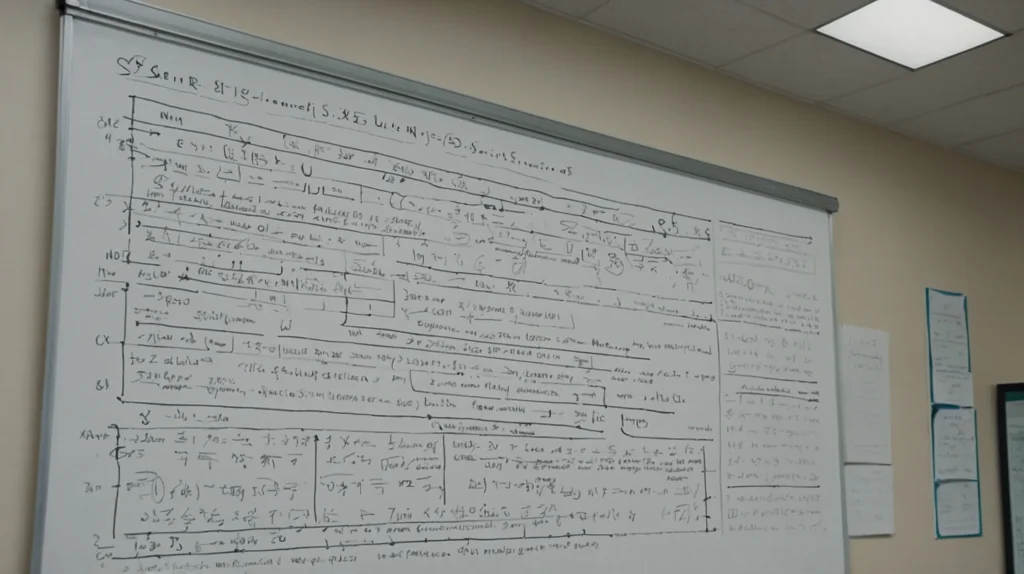
(AI Generated)
Scientists and mathematicians have a particular fondness for the letter S as a variable. From displacement in physics to entropy in thermodynamics, the letter S appears frequently in equations and formulas. Its curve visually distinguishes it from other common variables.
Technical terminology across disciplines shows a disproportionate number of S-initial terms. System, structure, synthesis, spectrum, symmetry – these fundamental concepts shape scientific discourse. The letter has become a shorthand for specialized knowledge.
In measurement systems, S appears as a crucial unit symbol. The second (s), the Siemens (S for electrical conductance), and the Sievert (Sv for radiation) all rely on this letter. International standards organizations have codified these uses across scientific communities.
Mathematical functions often employ the letter S notation for special properties. Sigmoid functions, S-curves in statistics, and series summations (∑) all connect to the letter. Its distinctive form helps mathematicians quickly identify specific operations or relationships within complex expressions.
Linguistic Power: Plurals, Possessives, and Pronunciation
No other letter shapes English grammar quite like S. It serves as our primary plural marker, transforming singular nouns into multiples with a simple addition. This seemingly small function carries enormous linguistic weight.
This pluralization role extends across many languages. From Spanish and French to German and Dutch, S frequently signals multiplicity. Even some non-Indo-European languages have adopted S-plurals through contact with Western languages.
The possessive function adds another layer of importance. The apostrophe-S construction efficiently indicates ownership in English, making the letter S a crucial marker of relationships between things and beings. “John’s book” concisely expresses what would otherwise require additional words.
These grammatical roles come with pronunciation challenges. The S sound can vary depending on context – sometimes voiced as in “zoos,” sometimes unvoiced as in “cats.” These variations cause difficulties for language learners worldwide, making mastery of S a benchmark for fluency.
Social and Psychological Dimensions
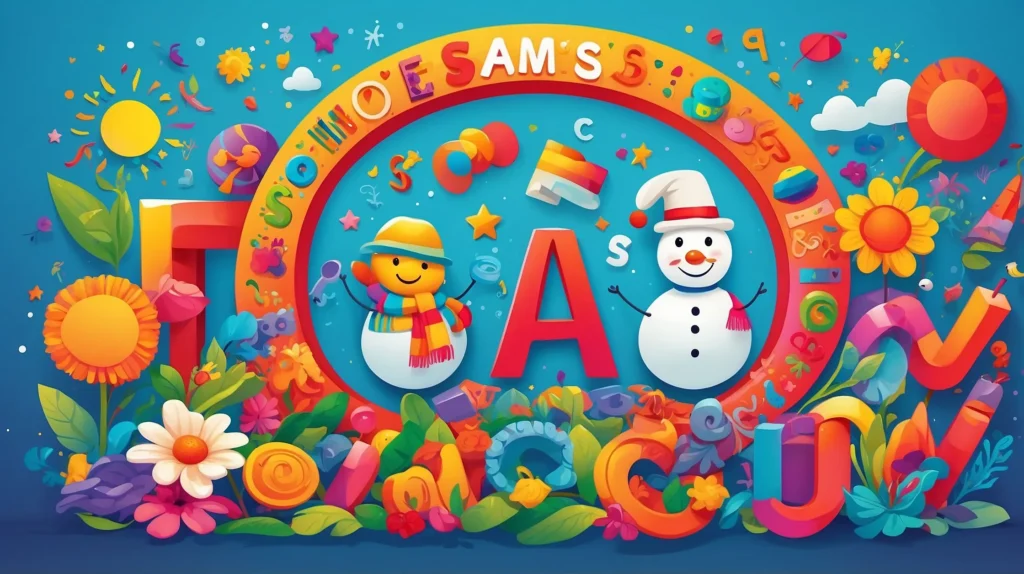
(AI Generated)
Weird how the letter S sound changes depending on what we’re saying, right? On one hand, it’s all gentle and soothing when we say words like “soft”, “slow”, or “smooth” – almost like a lullaby. But flip the script, and suddenly that same letter S sound turns aggressive and threatening in words like “slash,” “strike,” or “smash.” It’s like the letter has split personality disorder! I’ve caught myself using softer S-words when trying to calm down my nephew, and sharper S-words when I’m frustrated with traffic. Same letter, totally different vibes.
Certain S-words carry distinctly negative connotations. “Sinister,” “suspicious,” “sly,” “snake” – these terms suggest danger or deceit. The letter’s association with serpents likely influences these shadow meanings, creating a subconscious link to treachery.
Our subconscious processes these associations automatically. Studies suggest that words with multiple letter S sounds can trigger caution in listeners without their conscious awareness. This subliminal effect makes the letter S particularly powerful in persuasive contexts.
Children often struggle with S during development. The sound typically develops later than many other consonants, and the letter’s form proves challenging to write. The common phenomenon of “backward S” in children’s writing reflects cognitive developmental stages as they master spatial relationships.
Practical Applications and Fun Facts
The “backward S” written by many children deserves special attention. This reversal happens more frequently with letter S than with most other letters. Developmental psychologists suggest it occurs because the brain is still learning to consistently process directional information in symbols.
Consider the essential S-words in modern vocabulary. Science, society, system, success, security, social – these terms shape contemporary discourse across fields. It’s difficult to imagine meaningful communication without this core vocabulary.
The letter also carries an indefinable “coolness factor.” From Superman to sports logos to graffiti styles, S appears repeatedly in contexts meant to impress or inspire. The letter’s fluid form suggests movement and confidence in a way other characters can’t match.
Interestingly, some languages function with minimal the letter S sounds. Finnish, for instance, uses it sparingly compared to English. Hawaiians traditionally lacked the sound entirely before Western contact. These S-less or S-minimal languages remind us that communication remains possible without this specific sound, though they often develop alternative ways to express similar concepts.
Words That Begin With The Letter S
S slices through silence with sound, symbol, and serpent-like motion. These S-words shimmer with meaning:
- Side hustle – A small job or project done alongside your main income stream. Explore side hustles
- SEO – Search Engine Optimization, key to online visibility. SEO basics
- Symbol – A mark that holds more than its surface. Symbolism in culture
Conclusion: Why the World Can’t Function Without S
So here’s the deal – the letter S isn’t just another letter we could toss out and be fine. It’s the backbone of how we talk, write, and think! Without S, we’d lose plurals, possessives, and about a zillion important words. Languages worldwide would need a complete overhaul. Try going a single day without using any S sounds. I tried it once as a weird personal challenge and gave up after like 20 minutes. It’s practically impossible!
We take this curvy little character for granted, but it’s secretly running the show behind the scenes. Next time you spot an S in the wild, maybe give it a little nod of respect. That humble letter has been shaping human communication since before your great-great-great-grandparents were even born.
The symbolic inheritance we receive from this character includes associations with authority, transformation, mystery, and power. These meanings have accumulated over centuries, enriching our cultural understanding in ways we rarely consciously acknowledge.
In digital contexts, S continues to evolve. Emoji design, programming languages, and text prediction algorithms all grapple with the letter’s unique properties. As writing technologies advance, letter S adapts while maintaining its essential characteristics.
It’s remarkable to consider how much cultural weight a single letter can carry. From ancient carvings to digital displays, the letter S has maintained its ability to capture attention and imagination. Its perfect balance of form and function ensures it remains not just relevant but essential to human expression.
Continue Your Alphabet Journey
Explore More Letters:
A | B | C | D | E | F | G | H | I | J | K | L | M | N | O | P | Q | R | S | T | U | V | W | X | Y | Z
Share this article:
Did you enjoy learning about the letter S? Share your thoughts in the comments below or spread the knowledge by sharing this article with fellow language enthusiasts
